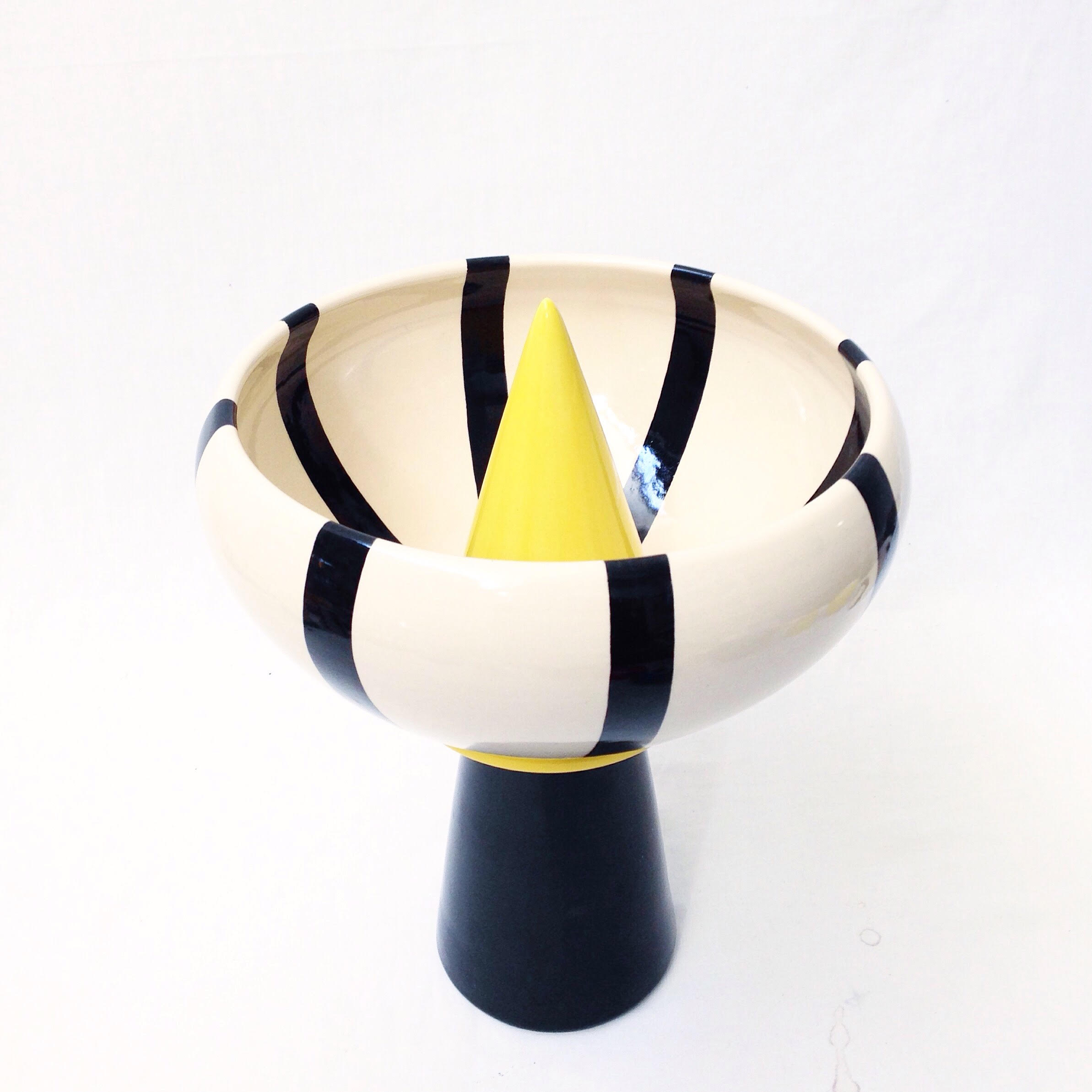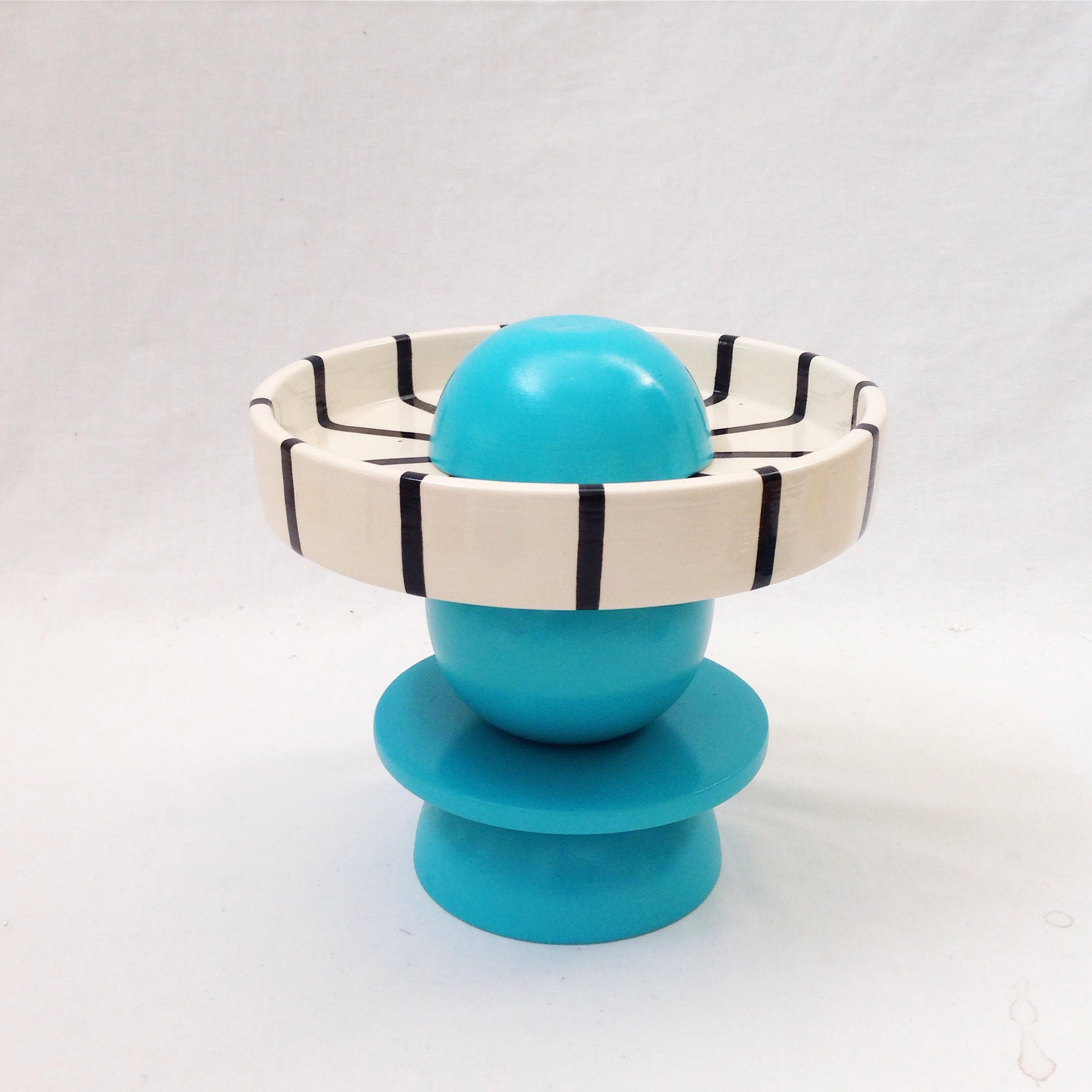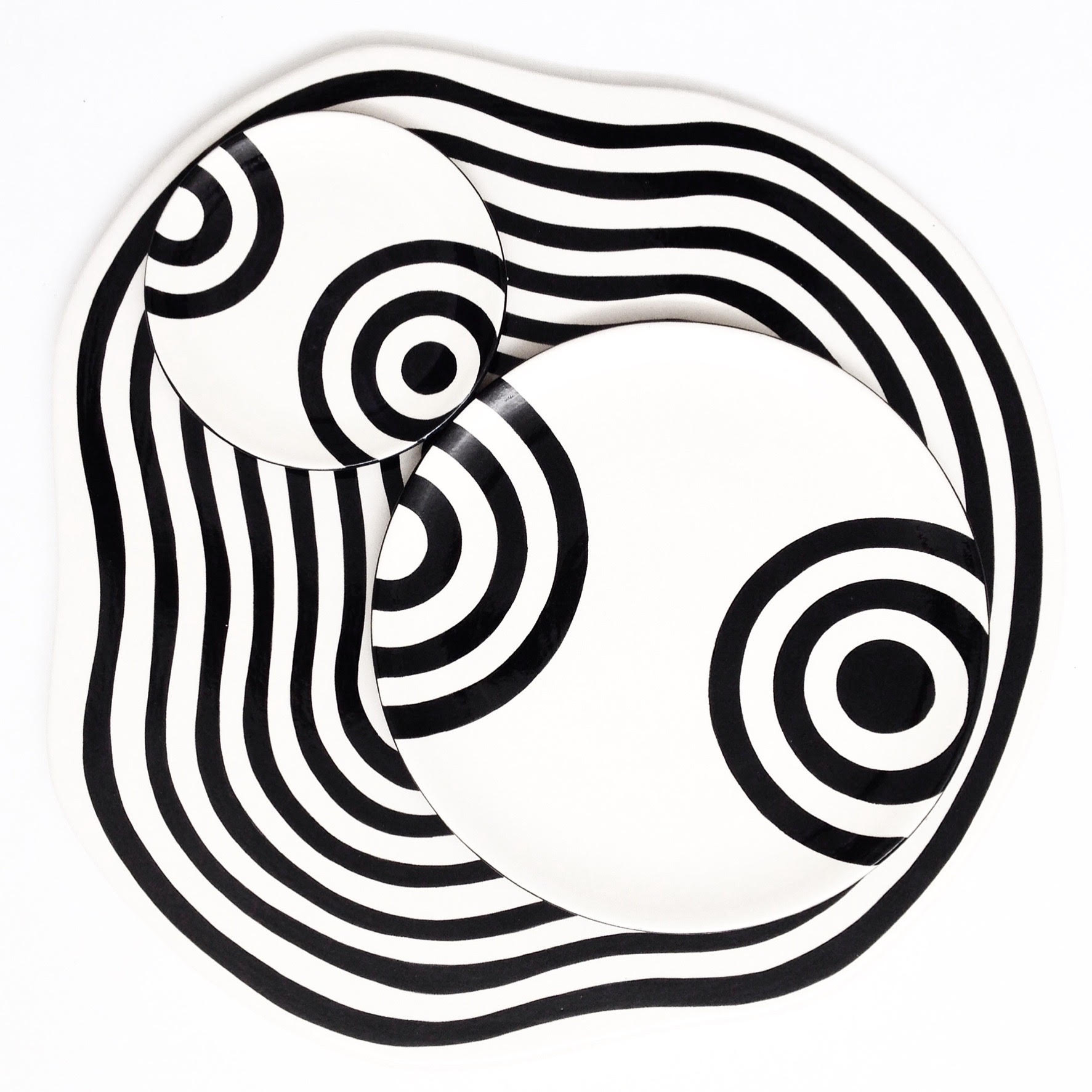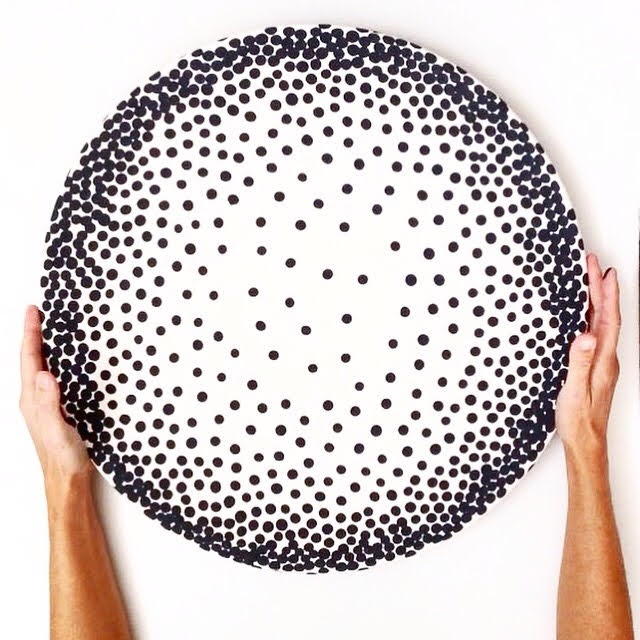It’s Wednesday very early in the morning. Carolina waits for me in her house-workshop in Chacarita. The oven is already loaded with several painted pieces, which will later result in Imperfecto Iotti ceramics.

While we talk about her childhood and the different disciplines that Carolina went through (Classical Dance, Contemporary, Illustration, Tango) she focuses on the brush and black enamel, to draw the first lines of a “Suculenta” (succulent).
She doesn’t work in series, she doesn’t want it to be “something mechanical”. The process is slow. She works with a potter, Sebastián Diaz, to whom she asks for specific measures and forms. Then she paints the pieces and chooses the final forms. In total each piece has a three-phase firing technique. Times vary a lot, but in a month maybe she can achieve ten finished pieces.
“Only once I made an order to make the same dishes and I told the client: you’re going to be the only person who has twenty-four of my same pieces.” Each piece is unique and this is something that she tries to maintain.
What did you have left of the family tailor shop? (Iotti House)
“All. The nobility of the genres. Honoring the office. ” Carolina speaks passionately of her grandfather and that place. It is there where she saw the perfection in the measures, the dedication, the infinite amount of evidence that was going to result in a suit “all made by hand”.
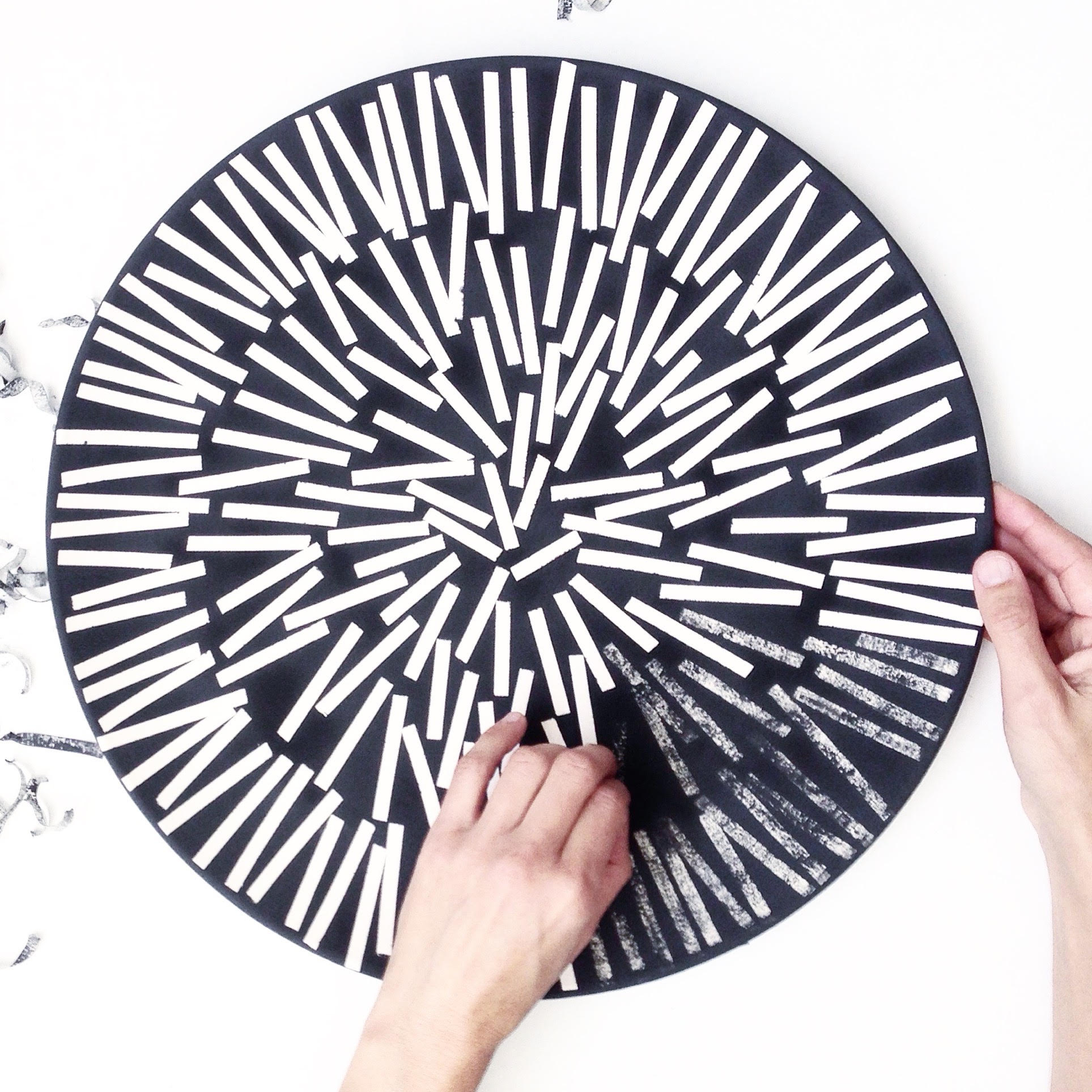
Today her pieces are part of the Restaurant of one of the most important Chefs in Argentina, Narda Lepes (Narda Comedor).
Is it the first time you work with a chef?
No, I started making special pieces for Roberto Petersen.
Also, from the moment I accidentally fell into ceramics (a mother from her kids school invited her to a workshop) I wanted to illustrate my own crockery. The relationship with the culinary and the utilitarian is present from the beginning.
However, the utilitarian exceeds these pieces. The artistic search was always present. From her childhood, she studied dance. In adolescence, in parallel with the professional dance, her father took her to the workshop of Hermenegildo Sabat, the renowned illustrator. Then, Tango gave her the chance to become independent, travel and live in other cities such as Paris, where she joined the company Tango Argentino (created by Claudio Segovia).
How did the color appear in your pieces?
It was from Narda. She invited me to visit her new restaurant, where white predominates, and there I thought: the pieces in black and white that I already have, here they do not go well. First I made some new pieces where instead of putting the geometry on the surface, I took it to the stand. This idea came from Narda, who took into account the competition that was generated between painting and what was going to be exhibited on the surface. Then I thought about the color and started to try different structures. I discarded many pieces to get to these “Reversibles”.
The color in some cases is enamel, which results in a more glossy finish. In other cases, I incorporates aerosol, a material that allows me to achieve different colors.
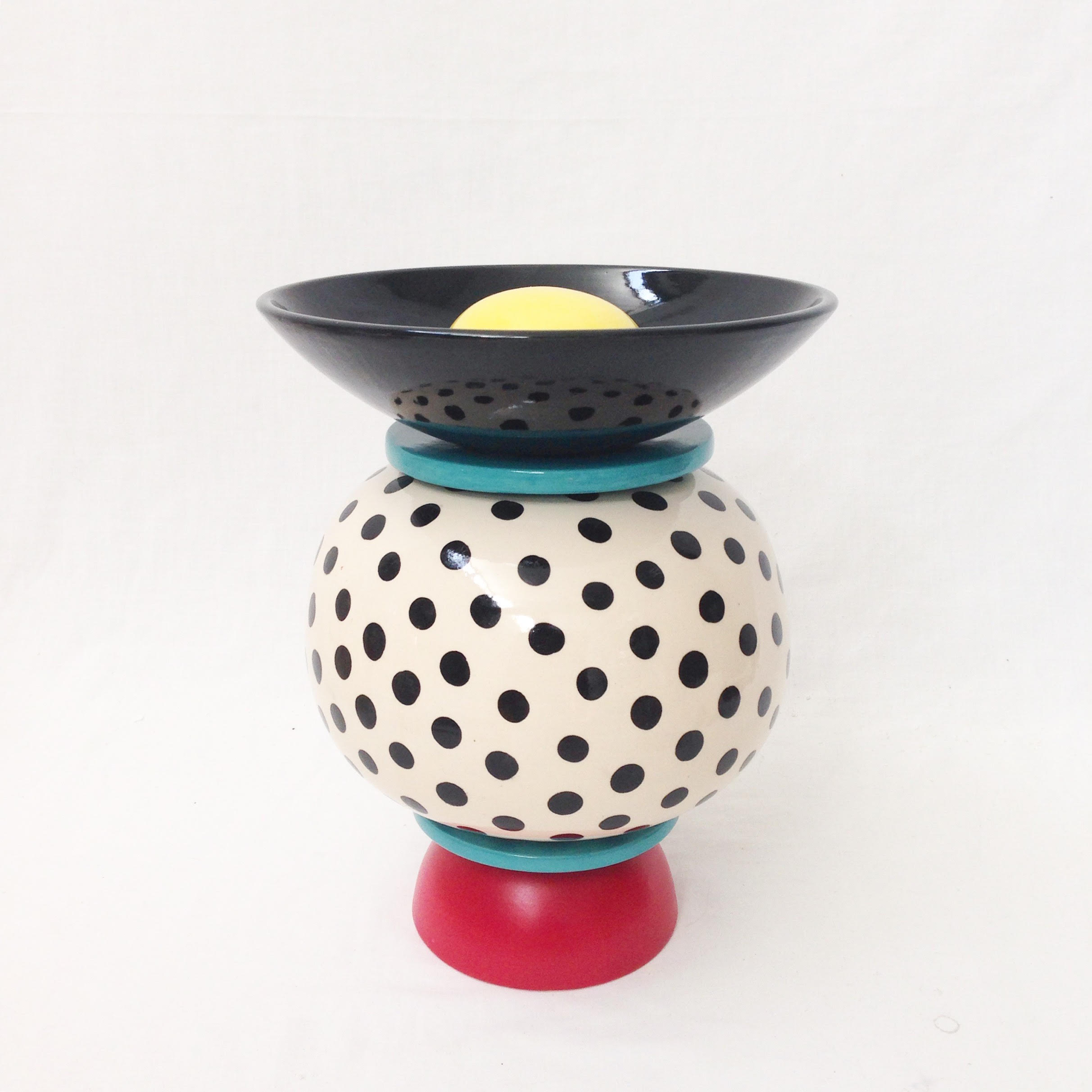
Do you get inspired by visual artists?
Yes, a lot. I really like watching young artists on Instagram. For example, ones that make 3d works, with some great colors. I could not tell you a particular name, but I’m watching and soaking all the time.
Her pieces could be found in the Malba Museum Shop and the Newbery Central Art Gallery shop.
When asked how she gets along with the most commercial part, Carolina always responds true to her initial idea: she wants to give the client a unique piece, with dedication. Although that means resigning orders and economic security.
“When someone from the outside contacts me, it’s very rewarding.” Although the shipping costs in many cases exceed the cost of the piece itself.
What discipline do you feel closest to, painting, dance …?
Textile. In fact, I would like to transfer my designs to the fabric some day. Surely it is something that is going to happen at some point.
We both agree that it will only be a matter of time.
